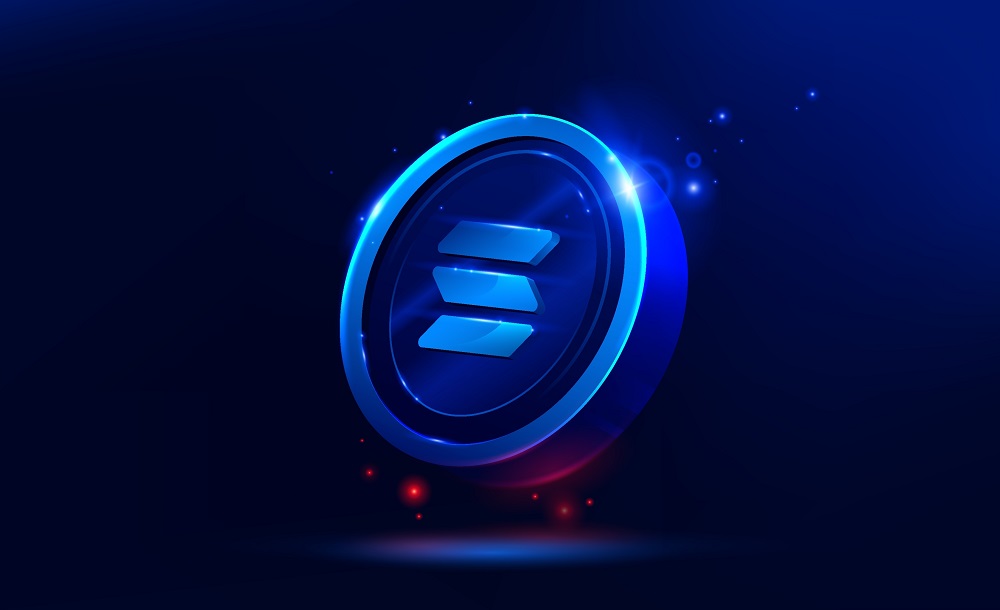Solana vs Polygon Vs Ethereum: Which Type of Blockchain is Better?
Blockchain technology is one of the most talked about technologies in the world right now. More precisely, it has penetrated almost every sector, bringing decentralization to business operations, existing technologies, and systems.
- The blockchain market worldwide will reach $1,431.54 billion by 2030. (Grand View Research)
The thriving blockchain trends and market growth are proof of the efficiency of the technology for businesses globally. With the entry of blockchain, many different kinds of applications also have begun emerging on the surface, like Non-Fungible Tokens and decentralized finance, to name a few.
On the other hand, considering the blockchain's efficiency in different segments, different types of blockchain technology have also popped up in the digital space.
The different types of blockchains, like Solana, Binance, Polygon, Etc., establish and strengthen blockchain relevance and efficiency across industries worldwide.
With companies leaning forward to decentralization, the demand for blockchain development is snowballing. These blockchain solutions or applications stand on the robust foundations of Solana, Ethereum, Binance, or Polygon blockchain.
Although the basic technology is blockchain, these different types of blockchain still show differences, subtle to major. These differences make them suitable for respective segments.
While Ethereum has been one of the oldest and most used blockchain platforms, Polygon and Solana have been the new players in the market, providing faster and better transactions for users. So, it is clear that all the types of blockchain hold different utilization values.
Let's discuss them individually to get a deep insight into their usability and efficiency. It will us to choose the better one between Solana and Polygon.
The Various Types of Blockchain Technology
We will pull off the blockchain technology efficiency by discussing all the types of blockchain, one by one:
What is Solana Blockchain?
In 2017, the Solana blockchain came into existence by Anatoly Yakovenko. It is the third generation of the blockchain network. Anatoly Yakovenko invented Solana to eliminate the scalability issue of the blockchain network.
Solana also holds the ability to fill the gaps of Ethereum loopholes. Besides enhancing scalability, the Solana blockchain also accelerates transactions.
Hence, Solana is preferable to companies willing to build dApps, NFTs, and other Web 3.0 projects.
Solana Blockchain Features: a Quick Checklist
- Solana uses the Byzantine Fault Tolerance (BFT) algorithm.
- It ensures that the failure of a particular node doesn't impact the entire network function and efficiency.
- It uses the Proof-of-History (PoH) consensus mechanism.
- Every node can make its own decisions rather than depending on other nodes.
- It divides various blockchain nodes into smaller packets and process data across multiple hardware to optimize the transaction speed.
- It uses multiple smart contracts simultaneously, reducing the transaction cost and increasing the speed.
What is Polygon Blockchain?
Like Solana, Polygon also emerged on the blockchain surface in 2017. Jayanti Kanani, Sandeep Nailwal, and Anurag Arjun invented the Polygon blockchain.
Polygon blockchain is one of the most lucrative networks for investors and businesses. It eliminated Ethereum issues like higher gas fees, lack of scalability, slow transaction speed, Etc.
Hence, Polygon is another excellent option for developers to build highly functional and scalable dApps. Polygon, one of the remarkable types of blockchain, helps Ethereum to transform into a multi-chain system.
Polygon Blockchain Features: a Quick Checklist
- Being an advanced blockchain network, Polygon also comes with unique and peerless features.
- Investors and developers consider Polygon as a Layer 2 scaling solution.
- Developers can place Polygon on top of Ethereum and enjoy the benefits of both blockchains.
- It is the only scaling solution that extends the support to Ethereum Virtual Machine (EVM).
- It supports two types of chains (multi-chain), i.e., secure and standalone.
Ethereum Blockchain: One of the Earliest Types of Blockchain
Ethereum is a ledger technology that many enterprises leverage to create new programs. It is one of the earliest types of blockchain networks. Ethereum is an open-source blockchain-based distributed computing platform run by blockchain experts.
In addition, it was Ethereum that brought the idea of smart contract technology to life. With Smart Contracts, businesses can eliminate third-party involvement. Before Solana and Polygon emerged on the surface, Ethereum was the single player in the blockchain space.
Solana vs Polygon: Which Type of Blockchain is better?
Solana, Polygon, and Ethereum hold a few similarities and differences. Although their released year is the same, they have differences in terms of architecture, mechanism, and many more like these.
Below, we will discuss the differences between Solana and Polygon in Detail to let you know which one is the best for your blockchain project.
1. Transaction Speed
These days’ people desire transaction speed just like lightning. In fact, transaction speed is a crucial aspect to consider when choosing a blockchain platform, especially between Polygon and Solana.
Solana leverages Tower Byzantine Fault Tolerance (tBFT). There remains no need for real-time communication between the nodes. In addition, Solana also uses GulfStream to push transactions fast to the edge. With tBFT and GulfStream, Solana can handle 65,000 Transactions Per Second (TPS).
On the other hand, Polygon can handle around 72,000 Transactions Per Second (TPS). So, Polygon is ahead of Solana in the case of transaction speed. So, if you want to experience a faster transaction, Polygon is unbeatable.
2. Scalability
Scalability is something that enabled Solana to beat Ethereum. So, while selecting between Solana and Polygon, remember to check the scalability parameter.
The good news is that Solana and Polygon are free from scalability issues. They can handle a large volume of transactions per second. So, with both Solana and Polygon, there remain no scalability issues. Solana and Polygon ensure to make fast, efficient, and scalable transactions.
3. User Experience
No matter what blockchain platform you choose, user experience always matters. So always consider user experience a crucial highlight while meddling between Solana and Polygon. Since Solana is not on the EVM network, its user experience is not satisfactory.
Users often switch to Avalanche or Fantom from Solana due to poor user experience. However, it never happens with the Polygon network. Being EVM compatible, Polygon never lets users face any issues during their transactions. So, in terms of user experience, Polygon scores better.
Wrapping up
To conclude, it is daunting to decide which of the types of blockchain is better than the other, especially between Solana and Polygon. If in a few parameters, Polygon seems better, Solana fits perfectly in some other aspects. It entirely depends on what kind of blockchain network will suit your project.
If you are still hanging in there, what to choose, Polygon or Solana, stop banging your head on the wall. EDIIIE will help you out. We will know your business requirement first and then suggest you the blockchain network suitable to your project.






